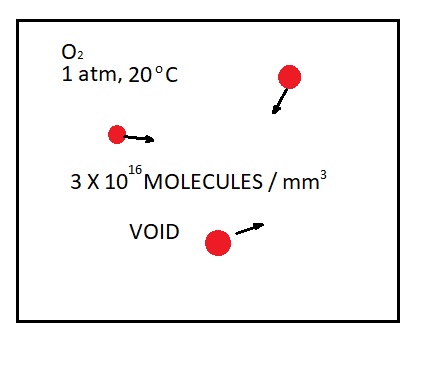When matter is in a gas phase the atoms are widely spaced out. However, for simplicity it is more convenient to ignore the atomic nature of a substance. Instead it is easier to view matter as continuous and homogeneous substance without any holes. When we do this to a gas we are treating it as a continuum.
The reason why we treat gas as a continuum is because it allows us to assume the properties vary continuously through out the gas. By allowing this assumption there will be no discontinuities that will need to be taken into consideration. However, in order to make this assumption the size of the system must be much larger than the spaces between the gas molecules. Generally this will not be an issue except in special cases.
Example
For example, lets consider a container filled with oxygen. First let’s take a look at the atomic properties of the oxygen atom. An oxygen atom has a diameter that is approximately $3×10^{-10}$ $m$ and a mass of $5.3×10^{-26}$ $kg$. In addition, at 1 atm of pressure and $20^oC$, the mean free path inside the container of the oxygen is $6.3×10^{-8}$ $m$. The mean free path represent the distance the molecule travels before colliding with another molecule. In this case it is about 200 times the molecules diameter.
Now let’s take a look at the container. At the current pressure and temperature, even if the container was $1$ $mm^3$ it would still contain $3×10^{16}$ molecules. In this case the continuum model can be used. The reason why is because the characteristic length of the container will be significantly larger than the mean free path of the molecule. However, as mentioned before in certain cases this may not be true. As a result, the rarefied gas flow theory will need to be used so that the impact of individual gas molecules can be considered.
